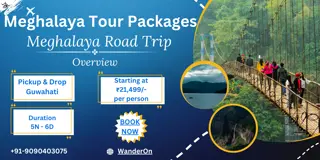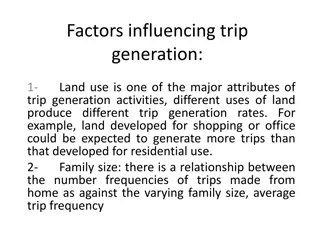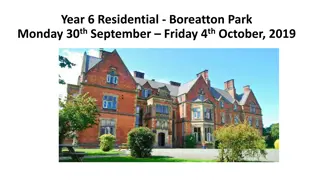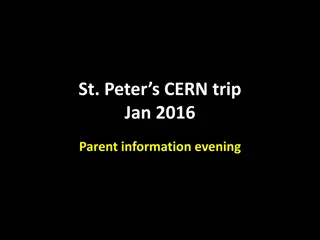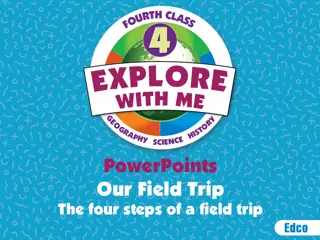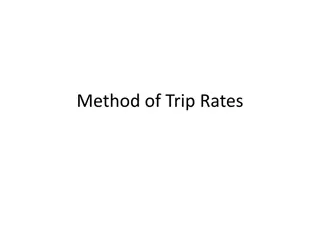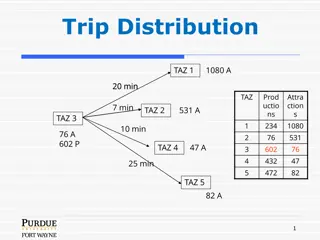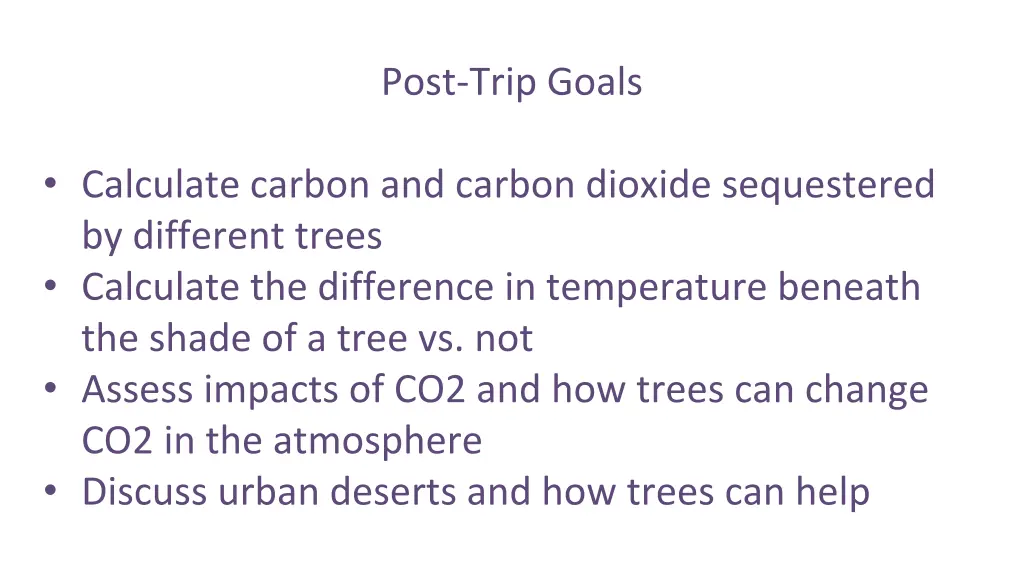
Tree Impact Analysis & Carbon Sequestration
Explore the calculation of carbon sequestered by trees, temperature differences in tree shade, and the role of trees in reducing CO2 levels. Learn about urban deserts and how trees can help. Create a Plant Palette for Carbon Canyon Regional Park, including tree information, carbon capture rates, and CO2 sequestration details.
Download Presentation

Please find below an Image/Link to download the presentation.
The content on the website is provided AS IS for your information and personal use only. It may not be sold, licensed, or shared on other websites without obtaining consent from the author. If you encounter any issues during the download, it is possible that the publisher has removed the file from their server.
You are allowed to download the files provided on this website for personal or commercial use, subject to the condition that they are used lawfully. All files are the property of their respective owners.
The content on the website is provided AS IS for your information and personal use only. It may not be sold, licensed, or shared on other websites without obtaining consent from the author.
E N D
Presentation Transcript
Post-Trip Goals Calculate carbon and carbon dioxide sequestered by different trees Calculate the difference in temperature beneath the shade of a tree vs. not Assess impacts of CO2 and how trees can change CO2 in the atmosphere Discuss urban deserts and how trees can help
Create a Plant Palette for Carbon Canyon Regional Park Information to include in your Plant Palette A map like the one we created during the field trip. You must include at least the 35 trees you measured, you may choose include others. You may use the same map (a digital version is on CANVAS) or create your own version based on how you decide to design your plant palette. Brief and basic information about Carbon Canyon Regional Park recall our class discussion about it s history, amenities, and assets Basic information about each tree type and how much carbon it takes up and how much it changes the temperature. A summary of how much CO2is sequestered in Carbon Canyon Regional Park. Any other interesting relevant information you learn and deem fitting to add
How did we calculate the amount of CO2 in our trees? (1) Measured circumference and calculated Diameter
How did we calculate the amount of CO2 in our trees? (1) Measured circumference and calculated Diameter (2) Used charts created from data collected from zillions of trees to determine the above ground biomass of the tree
How did we calculate the amount of CO2 in our trees? (1) Measured circumference and calculated Diameter (2) Used charts created from data collected from zillions of trees to determine the above ground biomass of the tree (3) We added 25% to that biomass to include roots
How did we calculate the amount of CO2 in our trees? (1) Measured circumference and calculated Diameter (2) Used charts created from data collected from zillions of trees to determine the above ground biomass of the tree (3) We added 25% to that biomass to include roots (4) We divided that by 2 to get mass of Carbon and then multiplied that by 44/12 to get CO2
How did we calculate the amount of CO2 in our trees? (1) Measured circumference and calculated Diameter (2) Used charts created from data collected from zillions of trees to determine the above ground biomass of the tree (3) We added 25% to that biomass to include roots (4) We divided that by 2 to get mass of Carbon and then multiplied that by 44/12 to get CO2 WHY these last steps? How does that give us CO2?
1st Part of Lab: The Redwood Grove (1)Open CANVAS and click link to class data sheet: https://csulb- my.sharepoint.com/:x:/r/personal/alyssa_abbey_csulb_edu/_layouts/15/Doc.a spx?sourcedoc=%7Bf8cc9408-4e5e-4759-ab9f- 22827459e1b3%7D&action=editnew (2)Enter the data you and your partner collected for the 5 redwood trees you measured - please do not clear data from others (3) Calculate CO2 for other trees and add answers to worksheet.
2nd Part of Lab: Global Carbon Budget (1)Open the link to the Global Carbon Budget Applet: https://galenmckinley.github.io/CarbonCycle/applet/ (2)Manipulate the inputs and run simulations about the effect on Atmospheric CO2 and global temperatures
3rd Part of Lab: Reflect on the complexity of trees (1)Read the article linked on CANVAS do we kill old trees to plant new ones since younger trees uptake CO2 at a faster rate than old trees?



